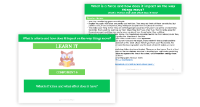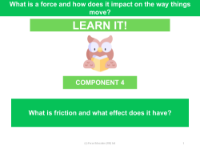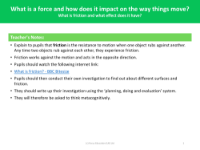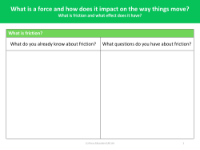Plan an investigation - Which surface provides most friction? - worksheet
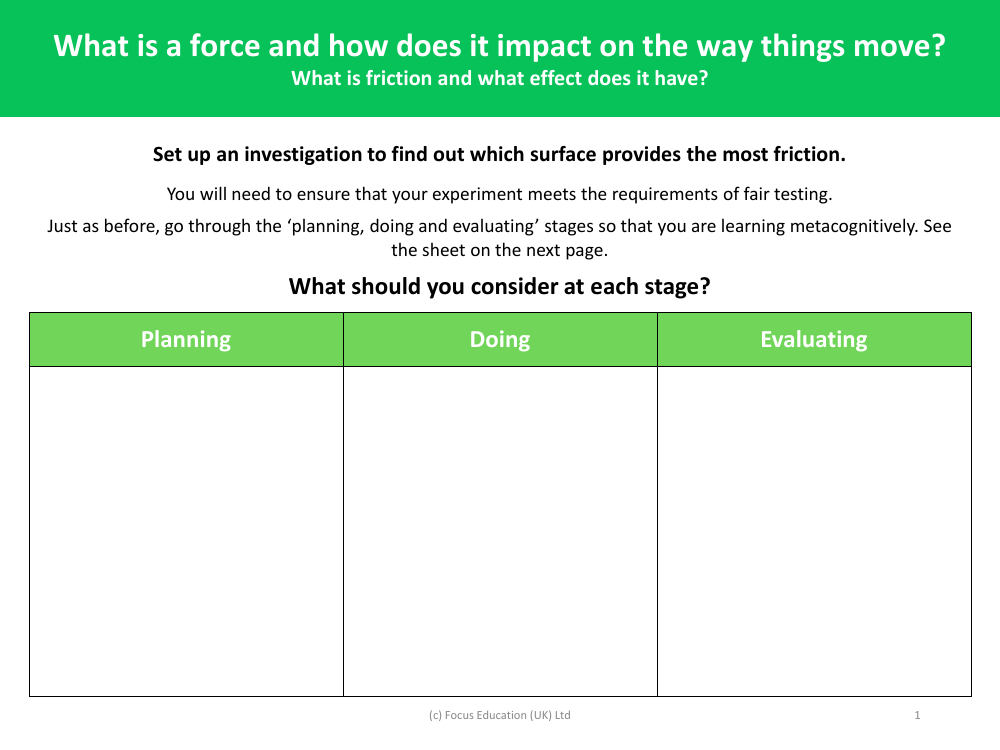
Science Resource Description
The worksheet provided by Focus Education (UK) Ltd outlines a structured approach to conducting a scientific investigation into which surface provides the most friction. At the 'Planning' stage, students are encouraged to clarify the investigation's objectives, anticipate challenges, and draw upon their existing knowledge of friction. They need to gather appropriate resources, consider their partner's ideas, and remain open to adjusting their plan based on the investigation's progress. This stage is crucial for establishing a clear understanding of the task ahead and ensuring that all necessary preparations are in place for a fair and effective experiment.
During the 'Doing' stage, students actively engage in the experiment, maintaining a reflective attitude towards their learning process. They must be willing to reassess their methods and adapt their approach if necessary, while also acknowledging the role of collaboration in refining their thoughts and actions. Finally, the 'Evaluative' stage requires students to critically assess the outcomes of their investigation. They reflect on what went well, what could be improved, and how the lessons learned can be applied to future scientific inquiries. This stage is essential for developing scientific thinking and understanding the broader implications of the experiment on their development as learners and scientists.

